7 Designer-Approved Rules You Should Follow When Choosing a Bedroom Paint Color
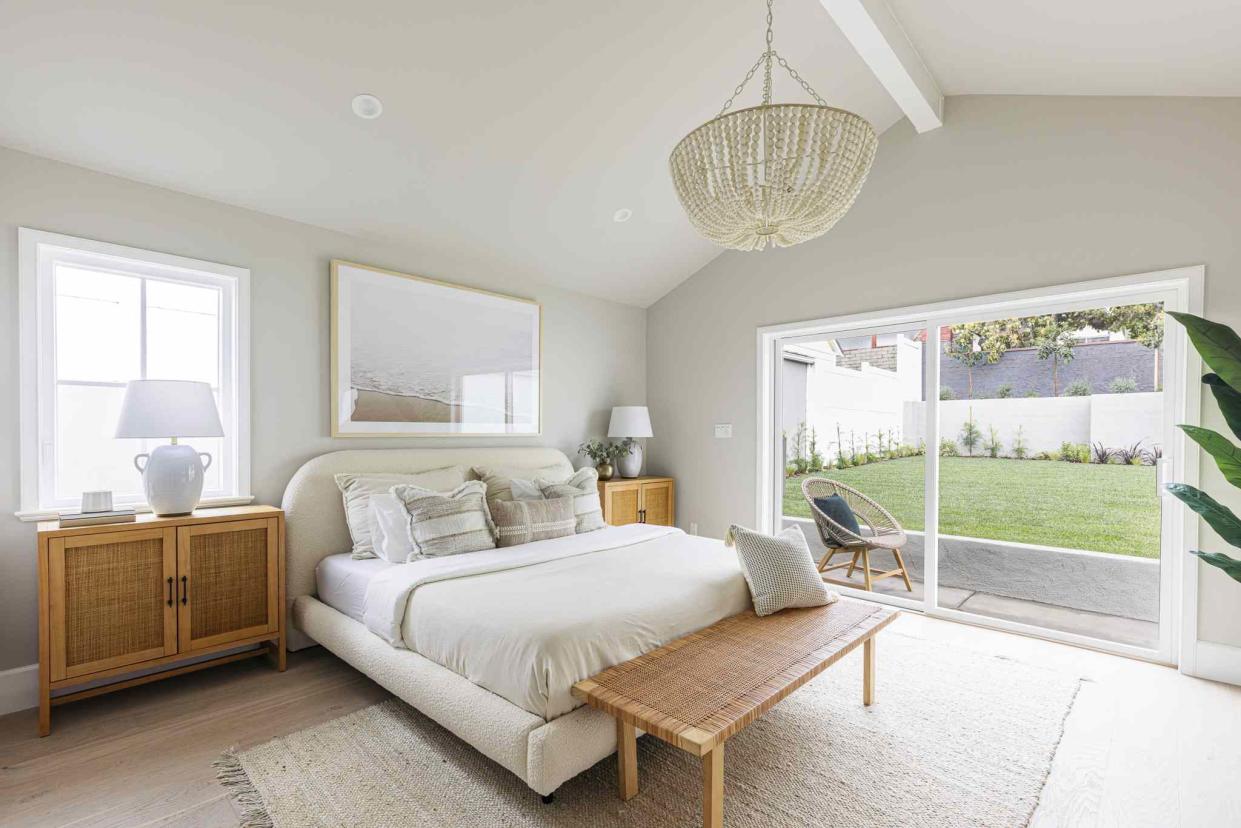
The Spruce / Christopher Lee Foto
Whether you've just received the keys to your new home, or are redecorating after a few years, a new bedroom paint color is the perfect way to refresh your room.
When it comes to selecting the ideal shade for this space and setting the mood and ambiance, there are a few rules that interior design experts always follow.
So as you prepare to pick your next bedroom wall color before your next weekend of DIY, these are the expert-approved tips to remember.
Meet the Experts
Laura Chapetto is the owner and principal designer at Element Design Network, an interior design and renovation company.
Jennifer Muirhead is an interior designer and founder of Jennifer Muirhead Interiors based in Morristown, New Jersey.
Soni Mehra is the founder and CEO of home decor brand Marble Lotus and principal designer at Marble Lotus Interiors.
Lighting is Everything
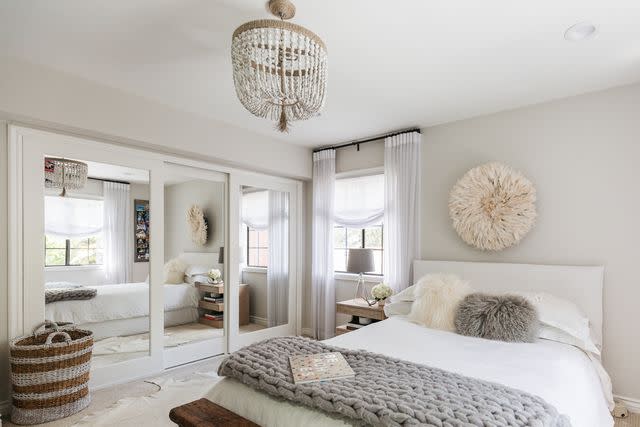
The Spruce / Christopher Lee Foto
Suppose you're starting a bedroom makeover with a blank canvas and no specific colors in mind. In that case, one of the first ways to narrow down your choices is by assessing the room's lighting situation, according to designer and home decor brand founder Soni Mehra.
"One major factor in selecting a bedroom paint color is the amount of natural light the room gets," Mehra says. "Larger windows provide more light, which can be maximized through matte and muted tones."
Interior designer Jennifer Muir agrees, adding that whether the room leans cool or warm impacts color choice. For example, north-facing rooms tend to have cold light, so she usually chooses a warmer-toned version of the color to create balance.
Want more design inspiration? Sign up for our free daily newsletter for the latest decor ideas, designer tips, and more!
Pick Colors for a Calming Space
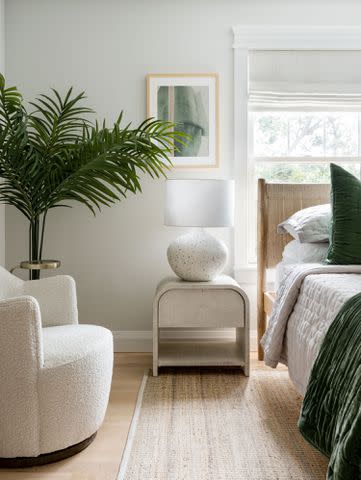
A bedroom is, first and foremost, your sleep sanctuary, and creating a cozy, calming setting for rest and relaxation is essential. Your bedroom paint color is what you will immerse yourself in when unwinding, so designers advise keeping this at the front of your mind through the selection process.
"You want your bedroom to be a place of rest, so avoid any stimulating colors such as red, bright yellow, or intense orange," home designer Laura Chapetto says. "These colors can encourage stress, and increase your heart rate."
"Avoid higher saturations and glossy paints in well-lit rooms," Mehra adds. "Sunlight can make these colors feel overwhelming instead of calming—the last thing you want in a sleep space."
Keep it Cool (or Warm and Cozy)
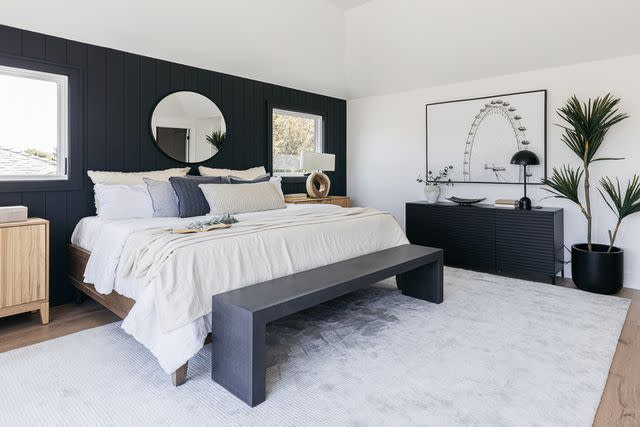
The Spruce / Christopher Lee Foto
When exploring the different shades for your bedroom, understanding the emotions each color evoked and determining how you want to feel in your bedroom can help with deciding between a cool or warm palette and finding your winning color, according to Chapetto.
"Cool colors are associated with calmness, relaxation, and tranquility, while are often associated with excitement and energy," Chapetto says. "Colors such as blue, green, and lavender are often used in bedrooms to promote a sense of tranquillity."
Design Tip
Subtle shades of warmer colors can evoke a sense of calm and bring coziness in your room. If you prefer warmer colors, opt for more subtle colors in the warm palette.
Coordinate with Your Surroundings

When it comes to bedroom windows, lighting isn't the only thing that matters. Your view acts as a permanent form of wall art, and much like the architecture of your room, it's a factor that needs to be worked into your decor decisions.
"It's important to consider the outside scenery as an element of your room's look and feel as well," Mehra says.
Do you look out on a forest, ocean, or city? Experiment pulling the outside in and seeking similar color palettes, or creating an intentional contrast through light and dark paint shades.
Consider a soft, sage green if your window looks out on trees or a backyard full of greenery, a soothing blue color scheme for a coastal bedroom by the sea, or a chic, muted neutral to reflect outside buildings in a city apartment.
Check Your Choice Before You Commit
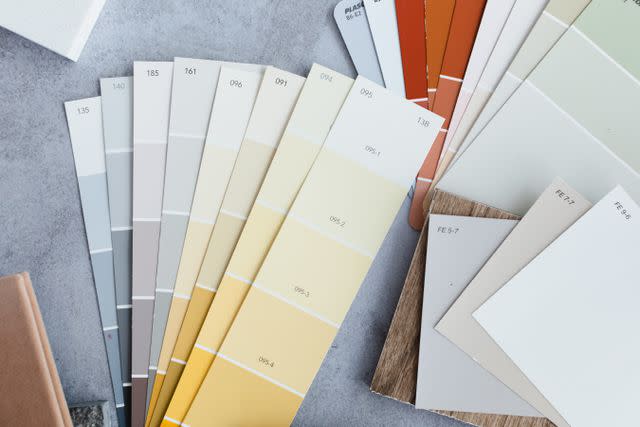
The Spruce / Michelle Becker
Before you run to get the roller out, our designers recommend taking your selected shade on a test run and trying to get the best possible idea of how your new bedroom paint color will look in different scenarios.
"I highly suggest getting five peel-and-stick samples of a single color and putting one on every wall of the room so that you can see how concentrated the color will look once it’s on every wall," Muir says. "Color is always intensified once it’s reflecting onto itself from every wall."
"Put paint swatches up on all of your walls in the space and see how natural light affects the color at different times of the day," Chapetto adds.
The Ceiling is the Fifth Wall

Although the paint color you pick for your bedroom walls is important, the ceiling is also an underrated spot to consider bringing the brush to.
From murals to dreamy pastel hues, the ceiling is the perfect place to let your imagination run wild or incorporate a super-light version of your favorite color.
"Try to pick something other than pure white for your ceiling," Muir suggests. "That’s the surface you’ll be looking at the most when you’re lying in bed, so why not give it an interesting almost-white color that compliments what’s happening on your walls?"
Consider Ceiling Height
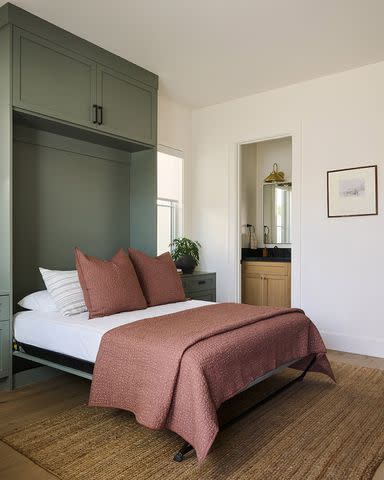
While coordinating (or contrasting) a bedroom ceiling color with the surrounding four walls and while deciding on a main paint color, Mehra suggests keeping the structure of the room in mind in order to maintain a soothing setting.
"The architecture of your bedroom and the ceiling height in particular also play a big role in setting the mood, and coordinating your paint colors to accommodate the structure is key," Mehra says. "Those with lower ceilings will want to keep darker paint colors to an accent wall, as using them in an entire room can feel small and cramped."
Read Next: How to Paint a Wall Like a Pro
Read the original article on The Spruce.

